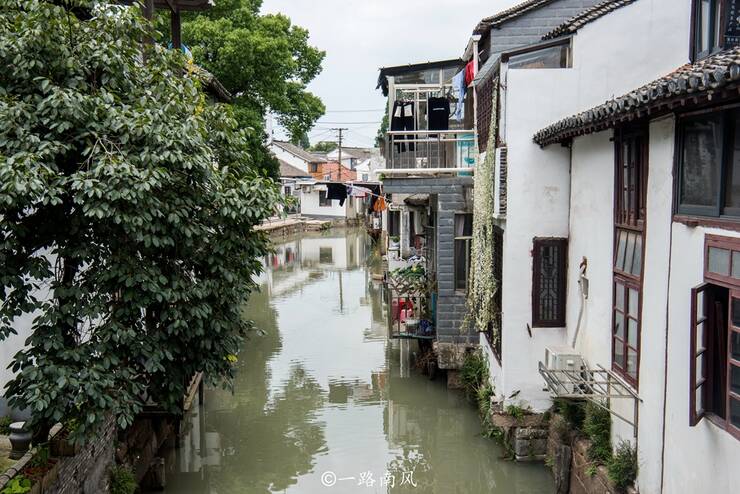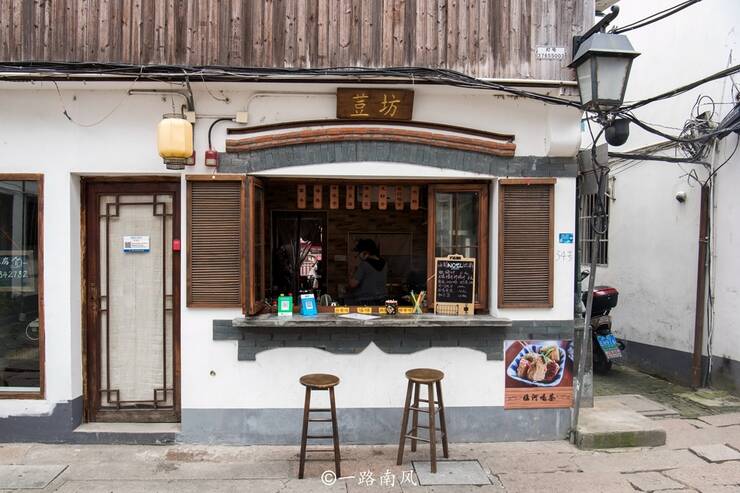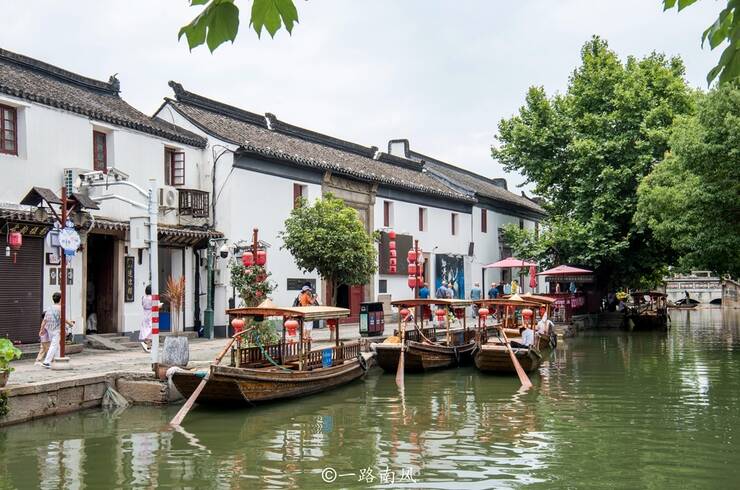There is such a small town in Shanghai
There are many ancient towns in the south of the Yangtze River. Three of the six ancient towns are located in Suzhou City, and the other three are located in Jiaxing and Huzhou, Zhejiang. Although Shanghai is an international metropolis, there are actually several ancient towns within its jurisdiction, such as Qibao Ancient Town and Zhujiajiao Ancient Town.
The ancient town of Zhujiajiao has the traditional characteristics of an ancient town in the south of the Yangtze River. Small bridges and flowing water are the biggest features. Arch bridges, residential buildings, small boats, pagodas, Buddhist temples, and small rivers appear poetic and picturesque against the backdrop of blue sky, white clouds, pomegranate and other vegetation.
Several of the six ancient towns in the south of the Yangtze River are enclosed and charged. The biggest advantage of the ancient town of Zhujiajiao is that it is free to open. Only the scenic spots such as Kezhi Garden require separate tickets to visit.
Zhujiajiao Ancient Town is located in Qingpu District, Shanghai. It is one of the four famous historical and cultural towns in Shanghai. It was originally part of the vast ocean. It only formed land about 7,000 years ago. It is guessed that it was formed by the sediment of the Yangtze River.
Zhujiajiao guards the main waterway and has a superior geographical location. Before the Tang Dynasty, it was under the jurisdiction of Kunshan, Jiaxing, Xinyi and other counties.
The ancient town covers an area of about 47 square kilometers and has a fan-shaped appearance. Not far away is the beautiful Dianshan Lake. The river surface here is relatively open, simple and elegant, with a sense of atmosphere that other ancient towns in the south of the Yangtze River do not have.
The ancient town fully retains the streets and lanes of the Ming and Qing Dynasties.
According to statistics, there are nine long streets stretching along the river. There are as many as a thousand ancient buildings standing on the water. 36 stone bridges connect different blocks together. Crossing the street and crossing the bridge, there is a landscape in front of you, and it has become the landscape of others.
About 1700 years ago, the Zhujiajiao area formed a village bazaar. It became prosperous during the Song and Yuan dynasties. Yuanjin Temple and Cimen Temple were built in the Yuan Dynasty. However, Zhujiao Town was officially established in the Wanli period of the Ming Dynasty. Only four hundred years.
The Dianpu River that flows through the ancient town is connected to other water systems in the south of the Yangtze River, and Zhujiajiao has become an important commercial port in history.
It is said that when the late writer San Mao came to visit the ancient town of Zhujiajiao, he was also fascinated by the style of Xiaoqiaoliuhui.
Some people say that the ancient town of Zhujiajiao is the "Venice of the East". I think Zhujiajiao is unique. It shows the elegance and poetry of Eastern architecture. This kind of tenderness in the bones is not available in ancient Western cities.
In the past, Zhujiajiao merchants gathered in Zhujiajiao, known as "clothes by the south of the Yangtze River". The reason is that the textile label industry here was once very developed. In the late Ming and early Qing dynasties, the rice industry became one of Zhujiajiao’s pillar industries.
The prosperity of pillar industries has given birth to the development of all walks of life. Bank pawnbrokers, financial industries, rice mills, and power plants have also appeared in Zhujiajiao.
The waterway is unobstructed and people's vision is relatively open, which is the reason for the prosperity of Zhujiajiao Ancient Town.
Travel Tips: You can take Shanghai Metro Line 17 and get off at Zhujiajiao Station and walk to the ancient town.

















COMMENTS